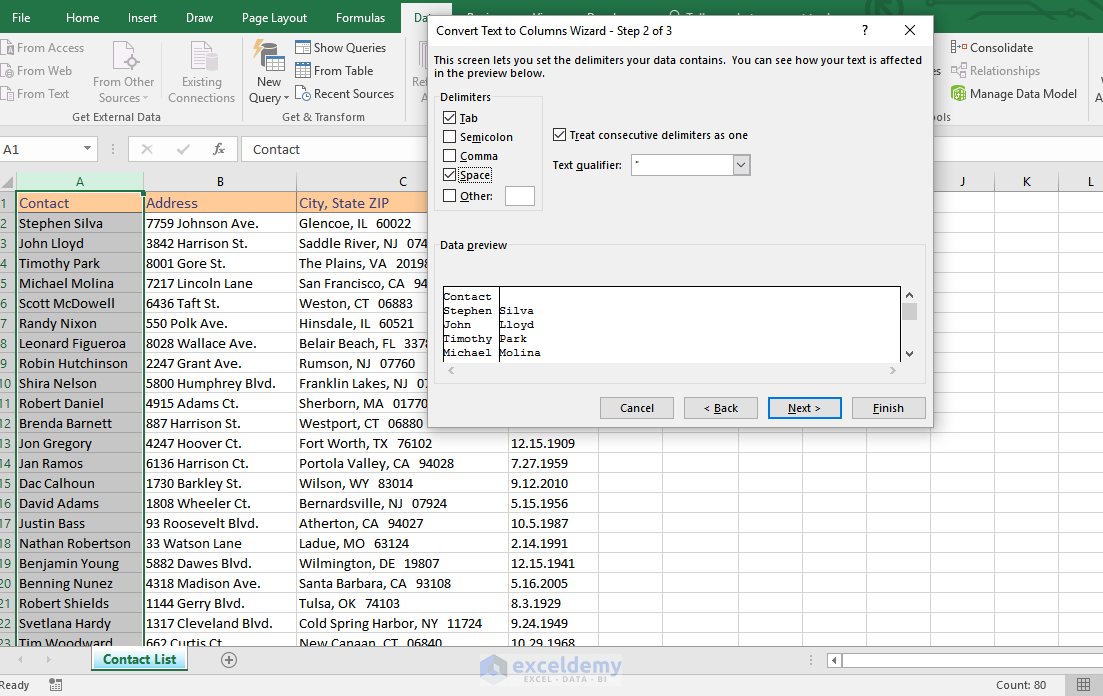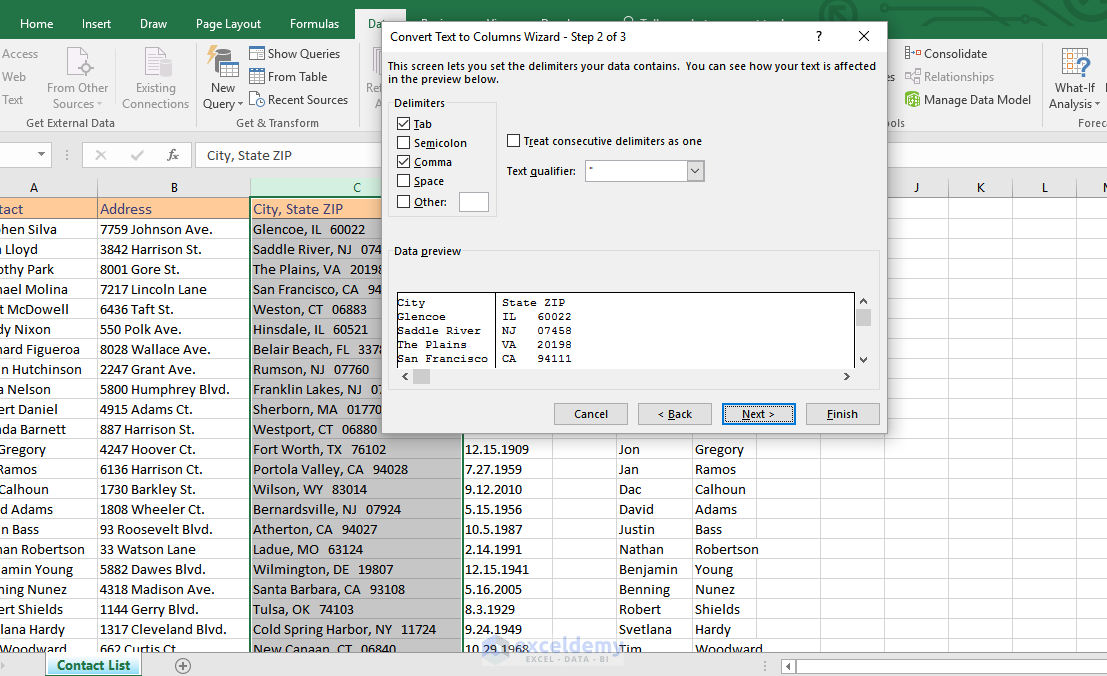Home > Articles > Home & Office Computing > Microsoft Applications
␡
- Using Text to Columns to Separate Data in a Single Column
There are even fewer steps to split text in one cell into multiple cells in Google Sheets. First import your spreadsheet into Google Sheets or make a new spreadsheet and paste in the data you want to split. Select the text or column, then click the Data menu and select Split text to columns. Google Sheets will open a small menu beside your. There are many ways to check if data is being properly collected on import data, verify data and split as needed by structure table. It's not necessary to collect, separate and format all data that was received, thus become the whole process of getting data fast and clean, only what really matters to be stored.
Select the column with the addresses in it. In our example, column B has the addresses so we would select the entire column by clicking on the letter B at the top of the column. Select the text to columns function from the data menu. When the text to columns wizard opens, select Delimited and click Next. Let’s see how to split a text column into two columns in Pandas DataFrame. Method #1: Using Series.str.split functions. Split Name column into two different columns. By default splitting is done on the basis of single space by str.split function. Import pandas as pd. Excel Text to Columns. Text to Columns in Excel is a method which is used to separate a text in different columns based on some delimited or any fixed width, there are two options to use text to columns in excel one is by using a delimiter where we provide delimiter as an input such as comma space or hyphen or we can use fixed defined width to separate a text in the adjacent columns.
This chapter is from the book
This chapter is from the book
Using Text to Columns to Separate Data in a Single Column
Data, Data Tools, Text to Columns can be used to separate data in a single column into multiple columns, such as if you have full names in one column and need a column with first names and a column with last names. When you select the command, a wizard dialog box opens to help you through the process. In step 1 of the wizard, select whether the text is Delimited or Fixed Width (see the next sections for definitions of Delimited and Fixed Width). In step 2, you provide more details on how you want the text separated. In step 3, you tell Excel the basic formatting to apply to each column.
If you have data in the columns to the right of the column you are separating, Excel overwrites the data. Be sure to insert enough blank columns to not overwrite your existing data before beginning Text to Columns. See the section “Inserting an Entire Row & Column” in chapter 2, “Working with Workbooks, Sheets, Rows, Columns, and Cells,” for instructions on how to insert columns.
Working with Delimited Text

Delimited text is text that has some character, such as a comma, tab, or space, separating each group of words that you want placed into its own column. To separate delimited text into multiple columns, follow these steps:
- Highlight the range of text to be separated.
- Go to Data, Data Tools, Text to Columns. The Convert Text to Columns Wizard opens.
- Select Delimited from step 1 of the wizard, as shown in Figure 3.6, and click Next.
Figure 3.6. Select the Delimited option to separate text joined by delimiters, such as commas, spaces, or tabs.
- Select one or more delimiters used by the grouped text, as in Figure 3.7, and click Next.
Figure 3.7. Select the Delimited option to use the comma as a delimiter between the city, state, and ZIP Code.
If you need more than one delimiter but one of the delimiters is used normally in the text, such as the space between city names and the space between a state and ZIP Code (Sioux Falls, SD 57057), consider running Text to Columns twice: once to separate the city (Sioux Falls) from the state ZIP Code (SD 57057) and again to separate the state and ZIP Code.
- For each column of data, select the data format. For example, if you have a column of ZIP Codes, you need to set the format as Text so any leading zeros are not lost. But be warned—setting a column to Text prevents Excel from properly identifying formulas entered into that column.
- Click Finish. The text is separated, as shown in Figure 3.8.
Figure 3.8. Using Text to Columns with a comma delimiter separated the city from the state and ZIP Code. Run the wizard again on the state ZIP Code column with a space as a delimiter to split up that data.
Working with Fixed-Width Text
Fixed-width text describes text where each group is a set number of characters. You can draw a line down all the records to separate all the groups, as shown in Figure 3.9. If your text doesn’t look like it’s fixed width, try changing the font to a fixed-width font, such as Courier. It’s possible that it’s fixed-width text in disguise.
Figure 3.9. Use the Fixed Width option when each group in the data has a fixed number of characters.
To separate fixed-width text into multiple columns, follow these steps:
Split Text To Columns
- Highlight the range of cells that includes text to be separated.
- Go to Data, Text to Columns.
- Select Fixed Width from step 1 of the wizard and click Next.
- Excel will guess at where the column breaks should go, as shown in Figure 3.9. You can move a break by clicking and dragging it to where you want it, insert a new break by clicking where it should be, or remove a break by double-clicking it. Click Next.
Don’t worry about leading spaces—Excel will remove them for you.
- For each column of data, select the data format. For example, if you have a column of ZIP Codes, you need to set the format as Text so any leading zeros are not lost, as shown in Figure 3.10. But be warned—setting a column to Text prevents Excel from properly identifying formulas entered into that column.
Figure 3.10. In step 3 of the wizard, set the format of each column. If you have numeric text, such as ZIP Codes, make sure you configure the wizard to treat the column as text so you don’t lose any leading zeros.
- Click Finish.